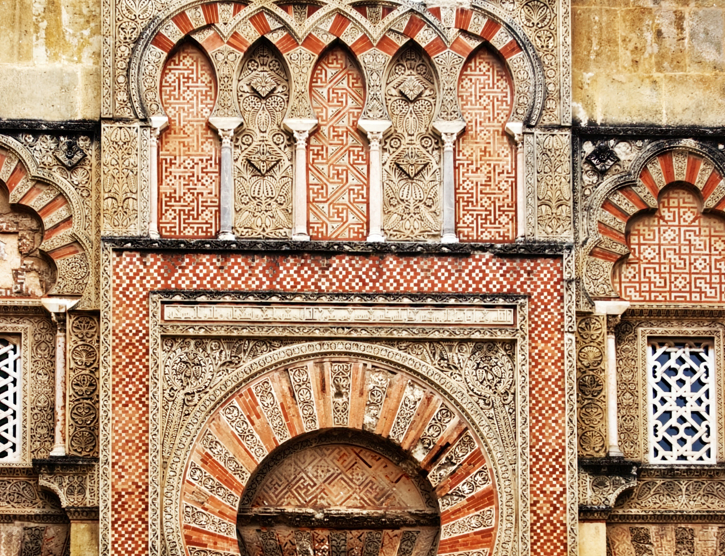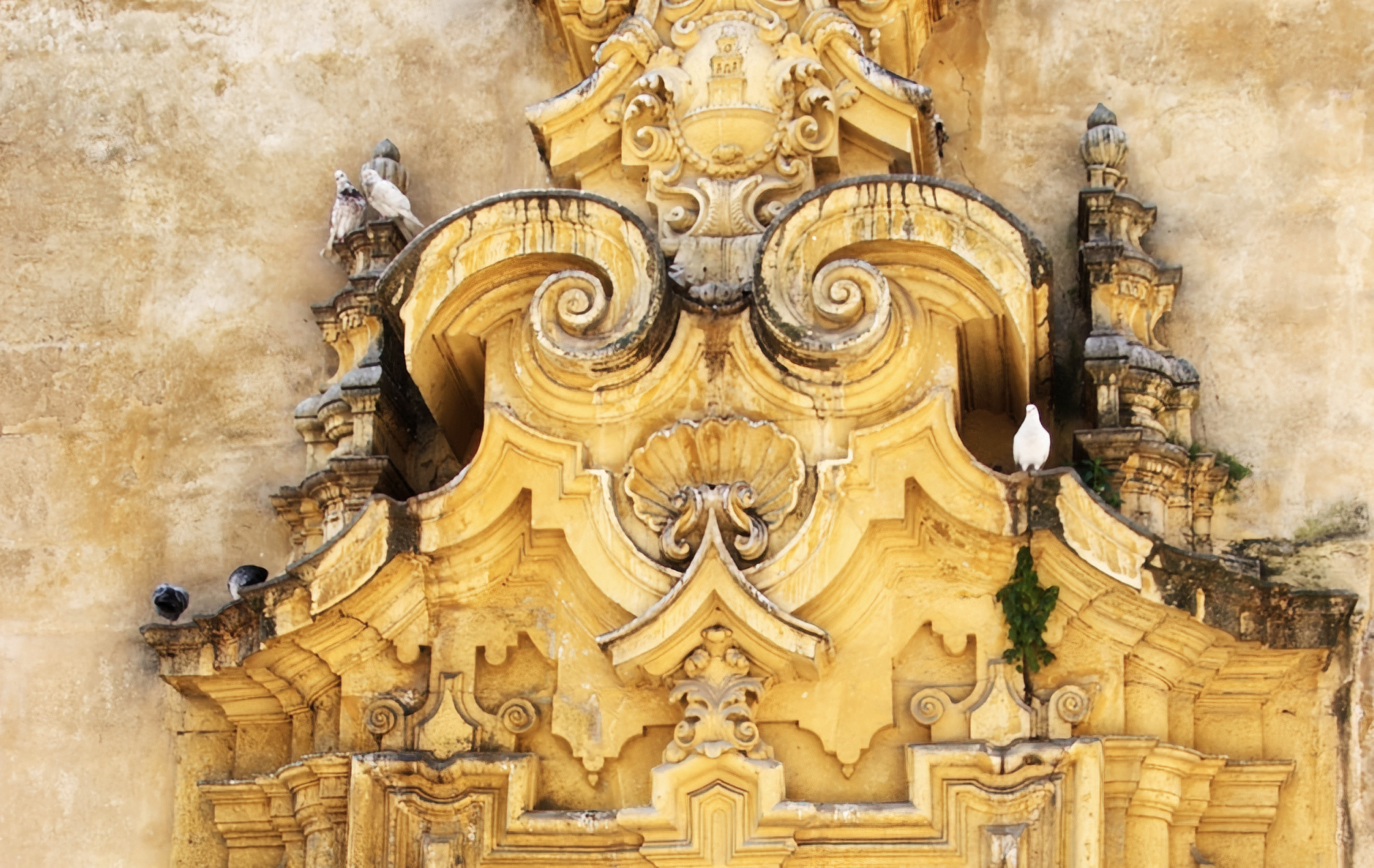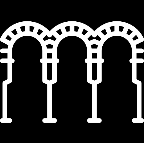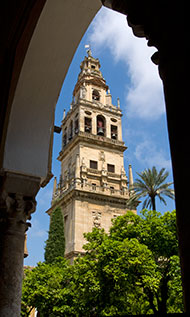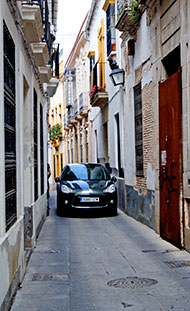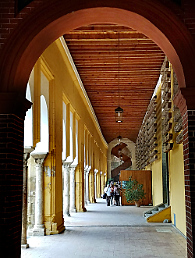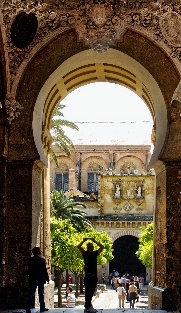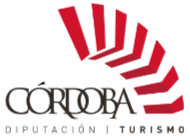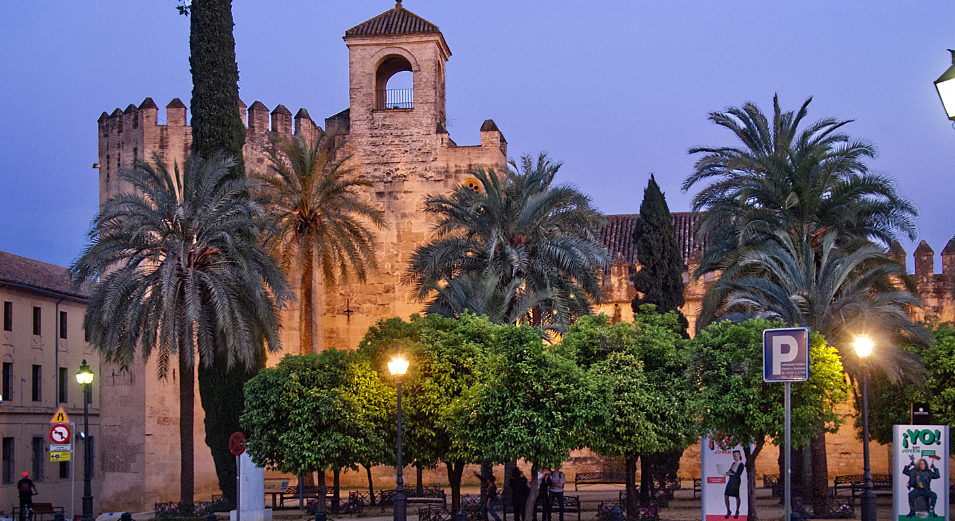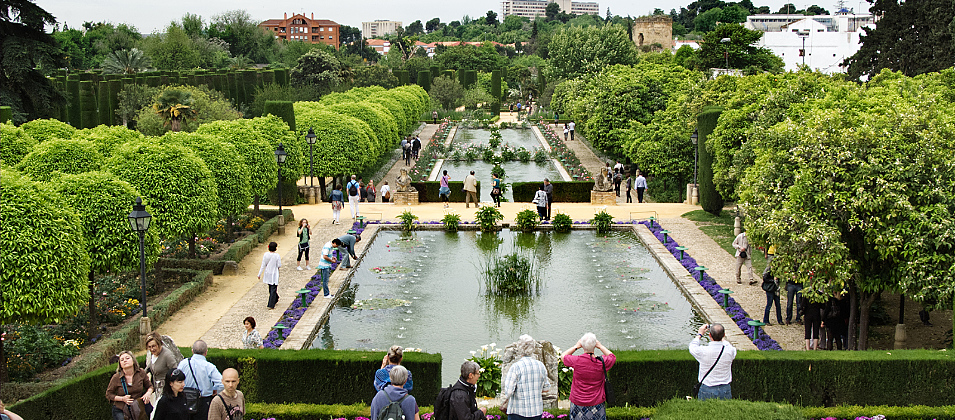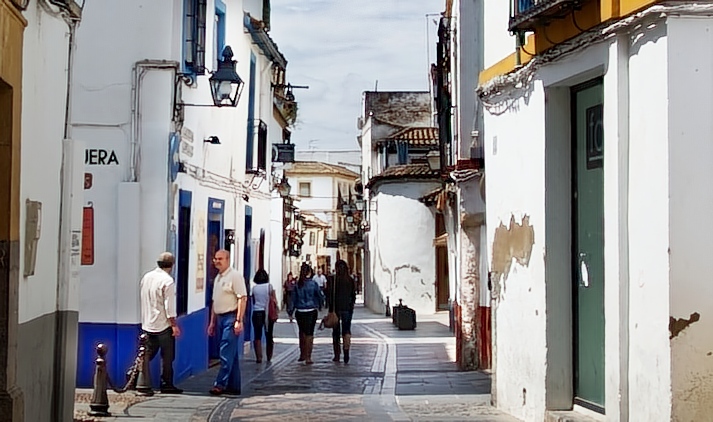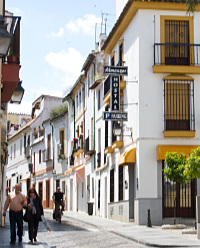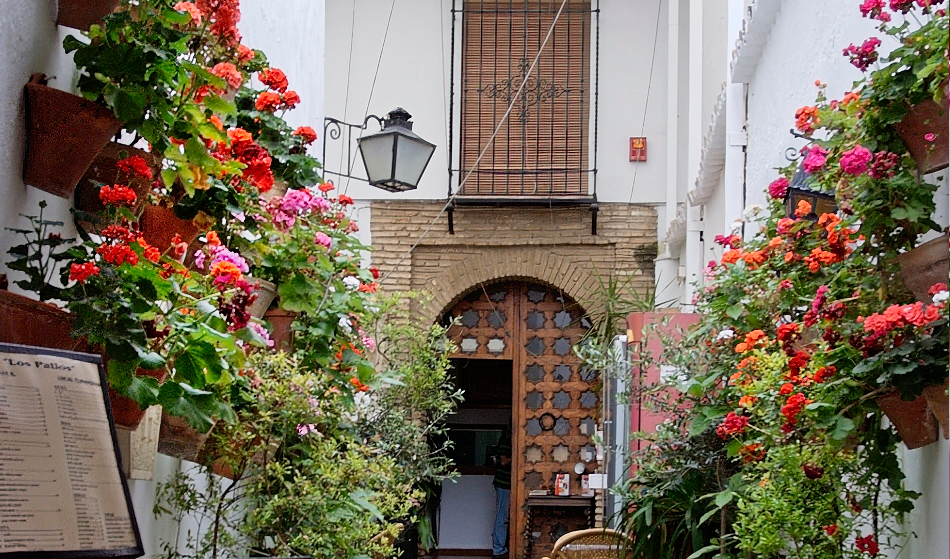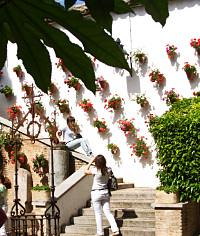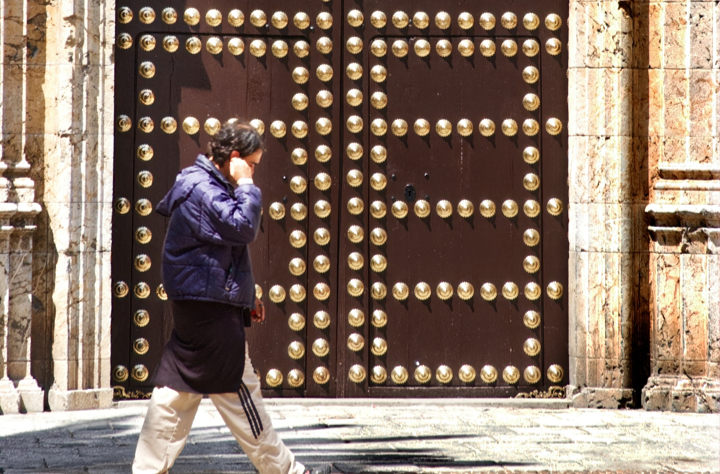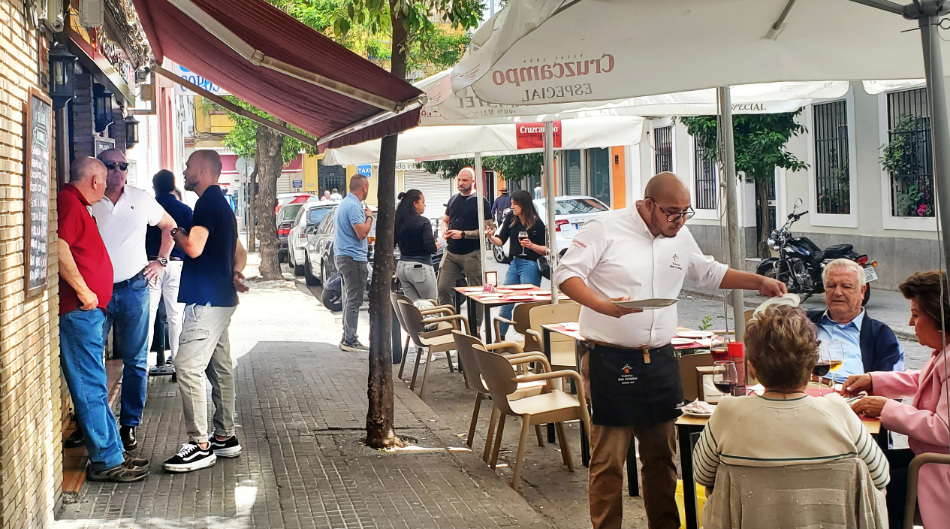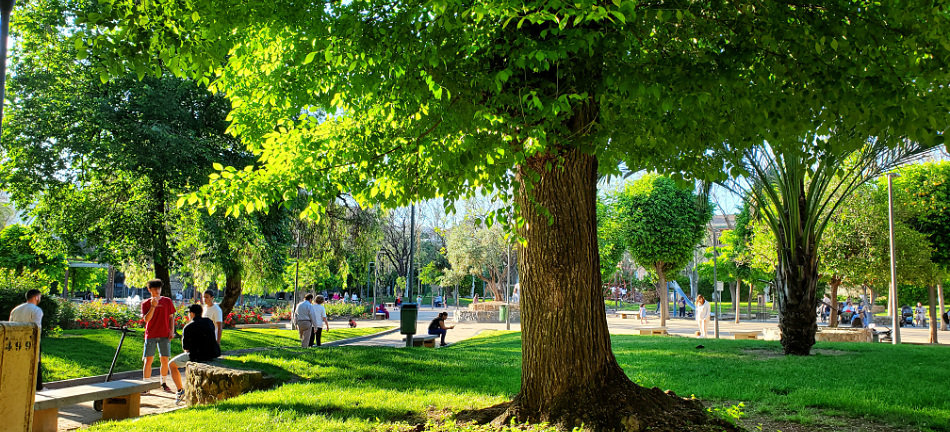Invaders Came And Built A Utopia |
|
An Iberian Roman city in ancient times, in the Middle Ages it became the capital of an Islamic caliphate. |
Step Back In Time… Arriving in Códoba by train one steps out into modern day Spain, tree lined avenues and new apartment buildings. A few minutes away you step back into a land of powerful Caliphs, medieval streets and the famed Mezquita, the focal point of the city and Códoba s great glory. During its prosperous Moorish Caliphate era (766-1031), Cordoba was a great cultural, political, financial and literary centre, with the largest library in the world. |
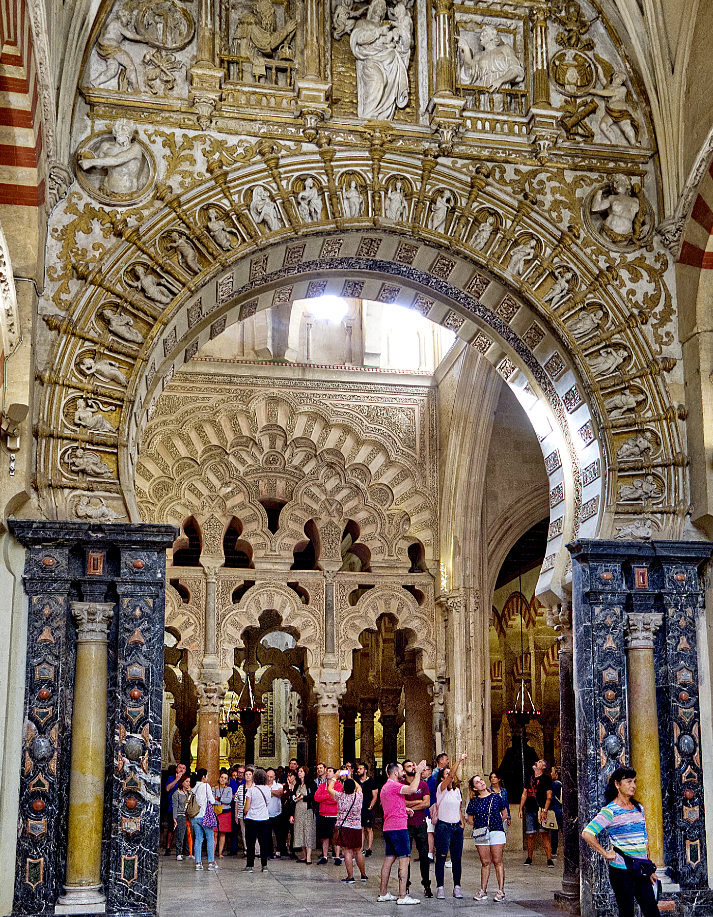
A mix of Christian and Moorish styles reflect the changes over time as the Catholics replaced the Moors.
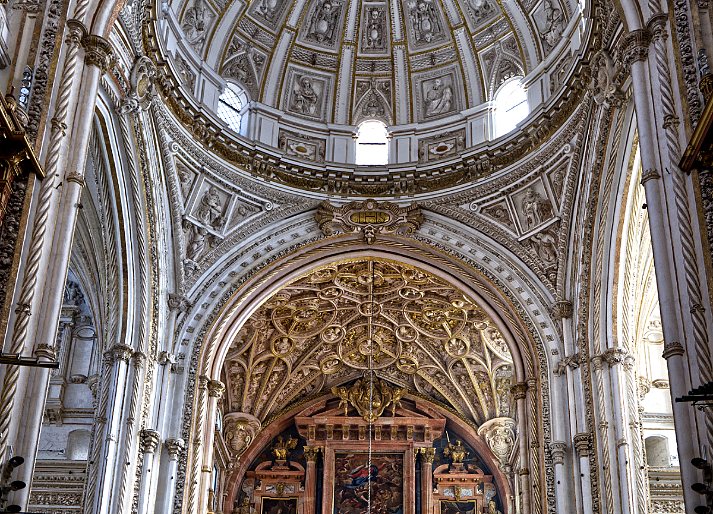
A church within a Mosque Since 1236 the former mosque has served as a Christian cathedral, and its Moorish character was altered in the 16th century with the erection in the interior of a central high alta.
Classic Moorish design lives next to traditional Christian.
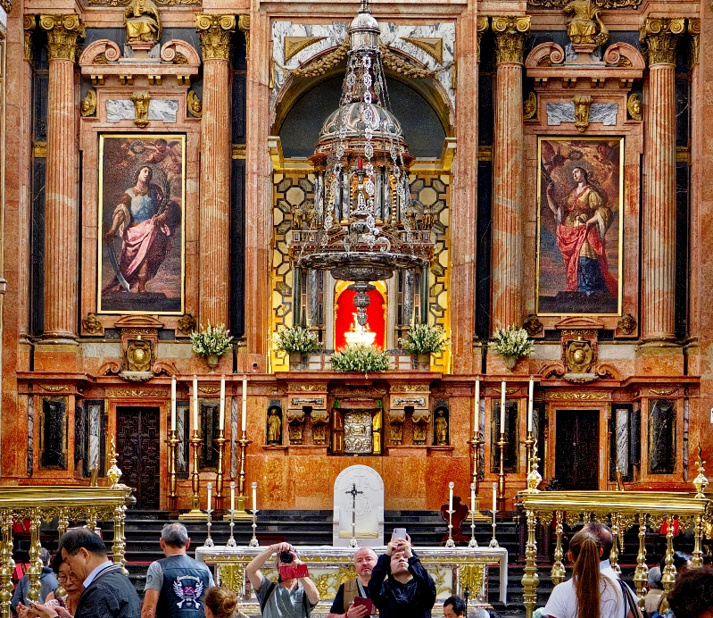
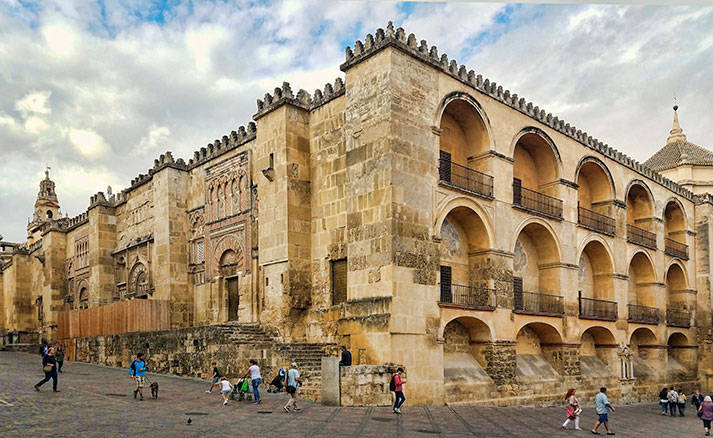
The Mezquita was originally built in 786 as a mosque, the structure was expanded several times under Cordoba's Muslim rule while still remaining largely true to the original design.
![]()
